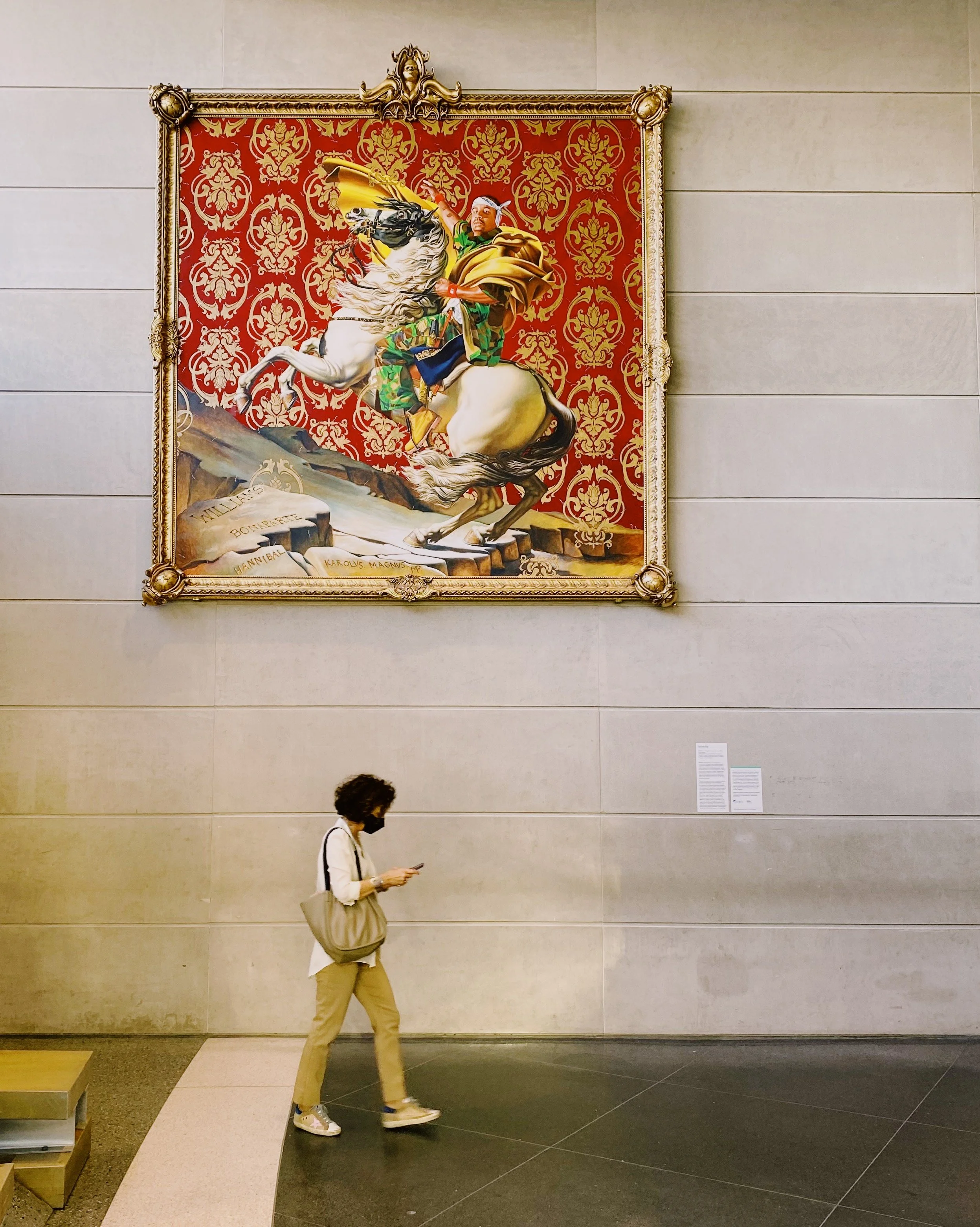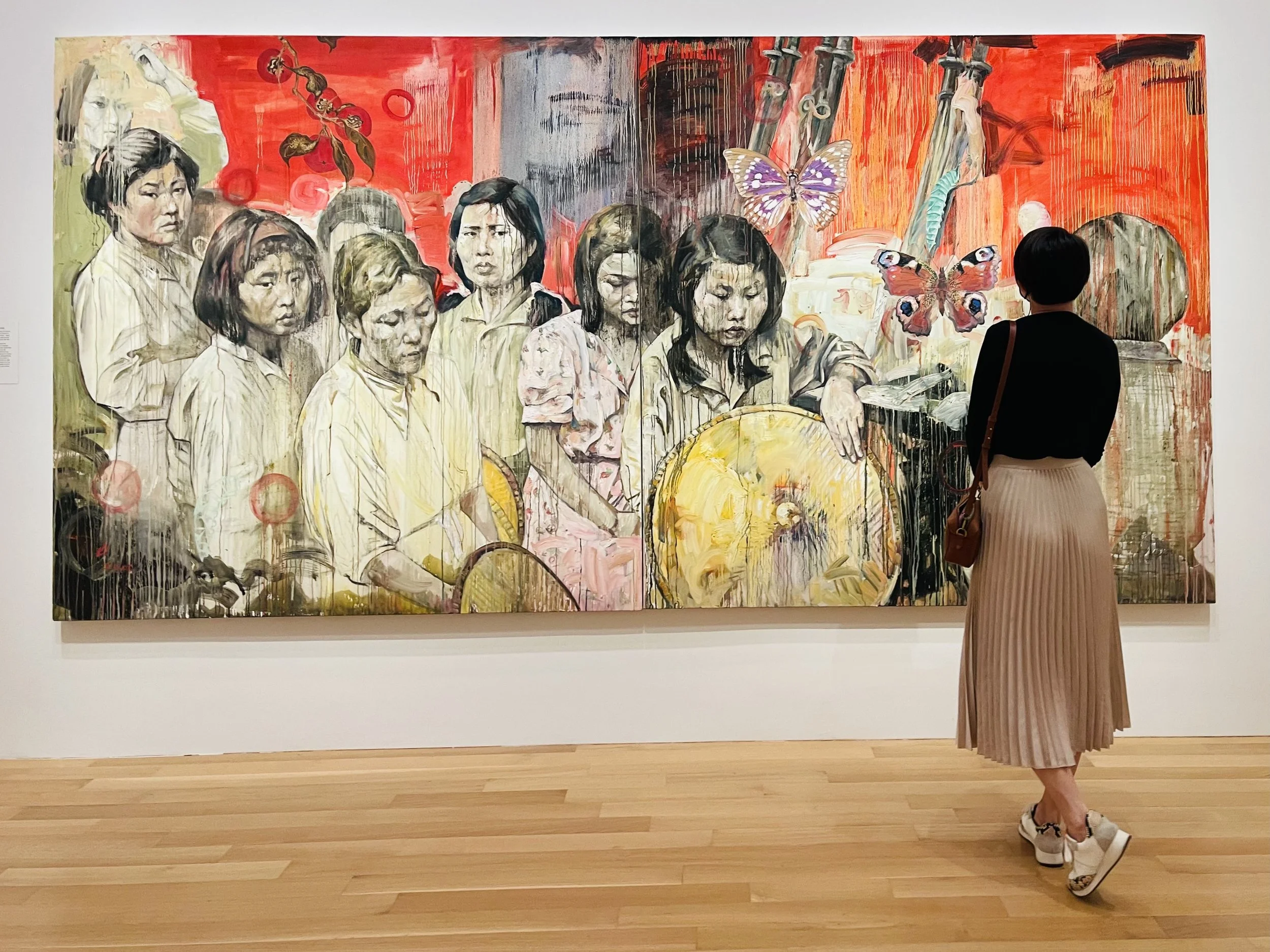Slow Read: Week 8
Growing In Curiosity: Portraiture
Who is my neighbor?
Chapter 7 begins the third and final section of the book. Congratulations on making it this far!
I love portraiture as a genre. I’ve written about portraits, identity, and the loving look elsewhere, including on Mary Cassatt’s “failed” portrait of Mrs. Riddle and Hung Liu’s exhibition Portraits of Promised Lands.
This fascination took shape during graduate school, when I took a great seminar on portraiture. Until that semester, I had not spent much time really thinking about how the way we define “portraiture” also tells us a lot about how we understand selfhood and identity. Is a portrait any representation of a human figure, or does it need to connect to a particular, real person? Does a portrait have to actually look like the person it represents? If a portrait is idealized is it “lying”?
Perhaps the biggest light bulb moment of that semester for me was the realization that portraiture can perhaps be best understood as a negotiation between the subject (or commissioner) and the artist. And that’s true even when the artist is the subject!
To help tease this out, Chapter 7 considers some different categories of portraiture: the physical self, the symbolic self, the public self, the private self, and the relational self. And, we look at painted, sculpted, and photographic portraits. But our attempts to chart these varieties also shows us the genre’s complexity and limitations.
Frankly, I’m still tickled by the comparison between Velázquez’s 17th century portrait of the Count-Duke of Olivares and the 18th century ndop from the Kuba Kingdom. While the naturalism of Velázquez’s portrait might lead us to assume that we’re looking at an accurate representation of the Count-Duke’s physical appearance, the visual conventions of the ndop are likely unfamiliar to many American viewers. And so, it can challenge us to look for the cultural symbols that are at work in Velázquez’s portrait too, the ones we might overlook and take for granted. How is identity actually being constructed, not just reflected, here? (And then go look at these amazing portraits by Malian photographer Seydou Keïta and ask the same question.)
Recognizing the cultural conventions of portraiture, even in illusionistic images or objects, also helps us better understand the work of contemporary artist Kehinde Wiley. If reproduction costs had not been a consideration for this book, I would have loved to include Wiley’s 2005 painting Equestrian Portrait of the Count-Duke Olivares. In this nine foot square painting, rendered with meticulous care, Wiley quotes Velázquez’s painting (or, technically, he quotes the painting at the Met that is a copy by Velázquez’s studio). But now, a young Black man, wearing Nikes and a baggy red hoodie, sits astride the rearing horse and the illusionistic background landscape becomes an elaborate golden filigree.
The painting is part of a series that Wiley made in the early 2000s. He recruited subjects from his Harlem neighborhood and invited them to look through art history books and choose a pose. Wiley would then paint the (anonymous) subject, in their street clothes, into canonical artworks of political and religious authorities. Wiley is not rewriting art history, so much as making evident the gaps in our visual archive. His contemporary work throws historical absences into higher relief.
But Wiley also never tells us the names of his subjects. So do we rightly understand these paintings as portraits, or do his Black figures become icons, stand-ins for a category of social identity?
And what about the question of authenticity? Culturally we celebrate portraits of celebrities that we perceive as being vulnerable and honest. We gravitate towards artworks that seem to do the same. But is Vincent Van Gogh’s self-portrait really any more authentic than Count-Duke Olivares’s? Are photographic portraits, like a haunting image of a family in mourning that includes an enslaved woman, also purposeful projections, not just mere documentation?
If you think about it, social media is full of portraits. And the range of attitudes towards those portraits can range from applause (love the dress!) to judgment (why does she post so many selfies?) to suspicion (I wonder how many bad photos are still on her phone). I want to encourage us to consider how studying these historical portraits might challenge us to be more generous and curious as we engage with our internet and real world neighbors.
There’s another, sobering application right now. The Israeli-Hamas war and the humanitarian crisis in Gaza has flooded the news with graphic depictions of violence and suffering. What do we do with all these images? How do we look generously and curiously, with love rather than a desire to consume or flatten or forget? How can you remind yourself that time continues beyond the split second frame of the photograph, that these real human beings are more and carry more than whatever “point” they may be making in a news article? When might it be appropriate to limit what you see? Consider, too, how the subjects of these journalistic photographs often do not have—or are given—the opportunity to approve these images. This may be a good time to return to some of the principles from Chapter 2: The Archive as we reflect on how images of human devastation might shape and misshape us.




